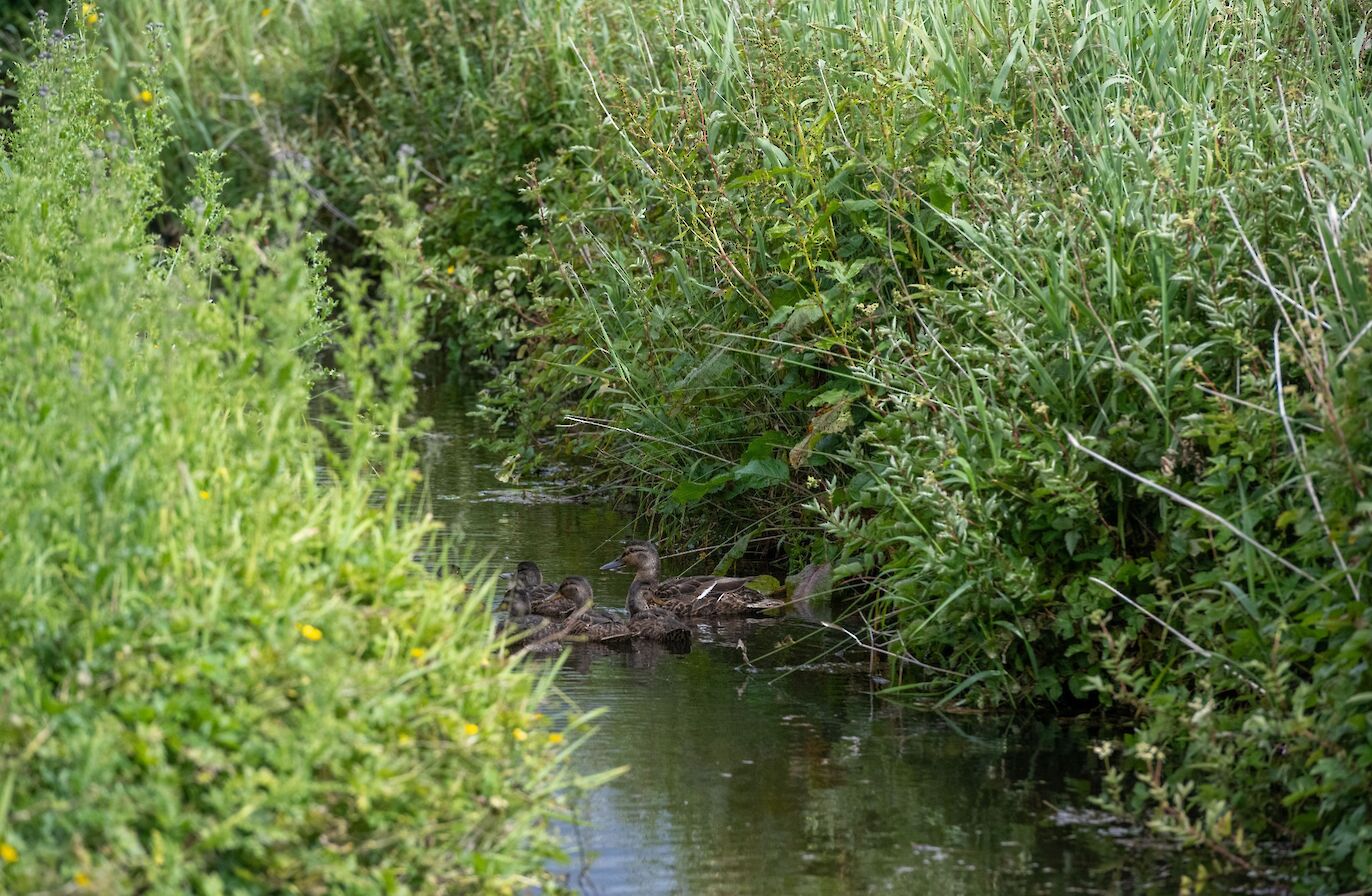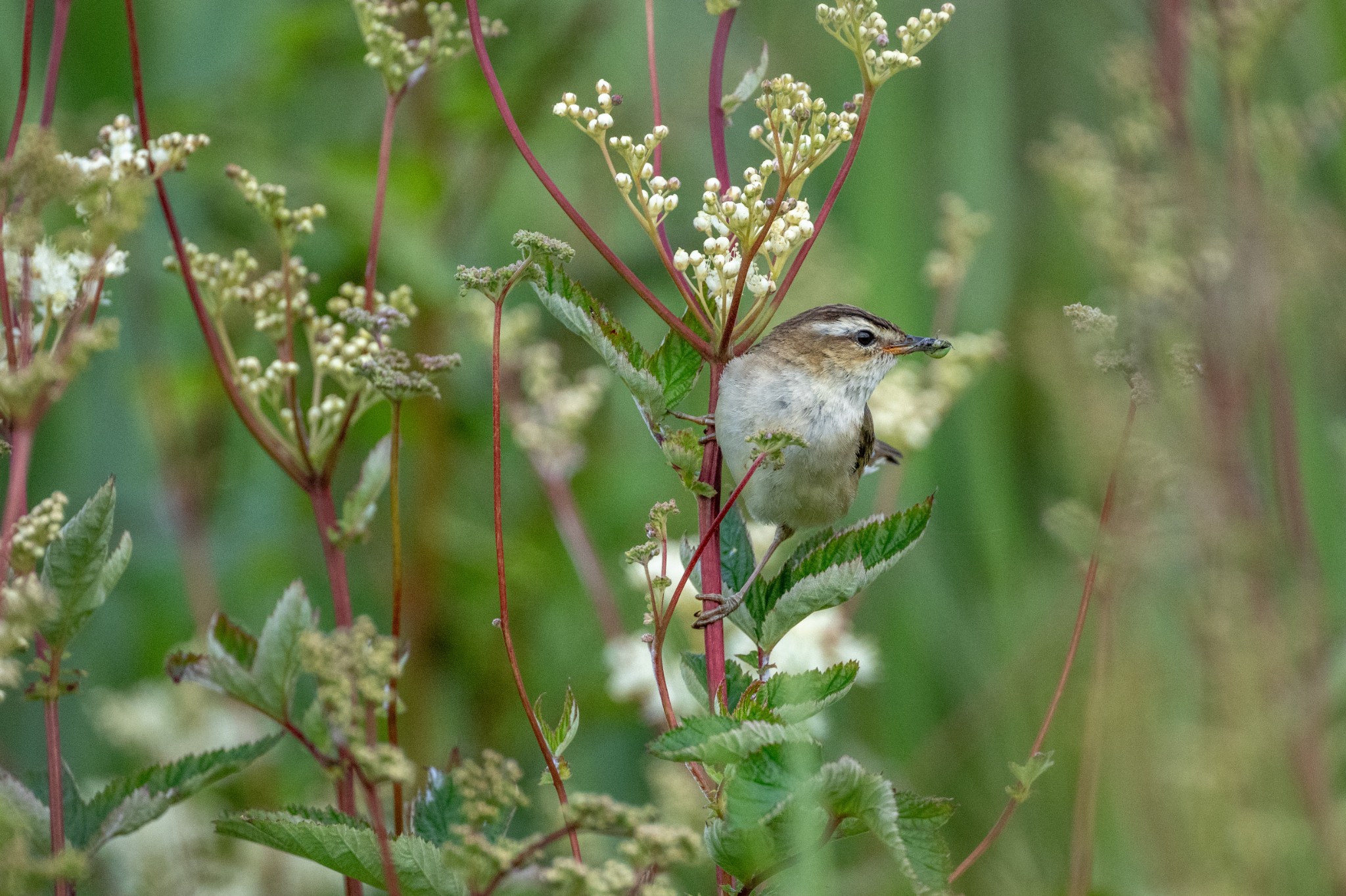I’m not even sure I should mention the summer.
When I took my labrador Lyra for a walk this afternoon it was 12C and even merited putting a hat on.
I prefer the cold to the heat but this summer hasn’t been much of a summer at all. This colder, wetter weather has had some implications for some of our wildlife too, the most glaring aspect being what we are not seeing rather than what we are seeing.
This time last year I was extolling the virtues of ‘no mow May’, allowing the wildflowers and ‘weeds’ to grow as a means of attracting insects thereby increasing the biodiversity of our gardens, simply by doing nothing. I felt I had won the argument for sacrificing quite a lot of lawn given the abundance of butterflies, moths, hover-flies and other invertebrates that were clearly utilising the garden.
Not so this year. Despite there being some compromise with regards the lawn remaining a lawn, we still have plenty of wildflowers but alarmingly little in the way of invertebrates. Insect populations in the UK have declined by a staggering 60% in the last twenty years but this summer I’m almost certain the wet spring and cold summer is why we are seeing so few around.
What I did notice however on my most recent dog walk was how lush the vegetation is. It’s funny how it feels like this has taken me by surprise but of course, as I do this walk several times a week, and it takes in some farmland, a small wetland and a path running alongside a burn to the sea, I’ve seen the increase in height and variation change since the spring.
It might surprise you to learn that I don’t usually take my camera with me when I take Lyra for a walk. The modern acronym ‘FOMO’ or the ‘fear of missing out’ certainly isn’t a new phenomenon but one that I think I’ve almost learned to live with. This fear is heightened by seeing other people’s images on social media. It’s natural of course to want to have nice encounters with wildlife, but on these dog walks my mindset is just to enjoy being outside, enjoy the company of my dog, and if I see something interesting then enjoy the moment for what it is. This pragmatism was tested recently however when, in the pouring rain, a short-eared owl sat soaked on a fencepost a mere ten metres away.
This would have made a wonderful portrait of the owl, its dripping feathers and less-than-impressed look on its round face beautifully reflecting the moment. In order to carry on with the walk it meant taking me and Lyra closer to the owl, but it sat where it was as we passed. I experienced that tinge of disappointment, knowing that I’m unlikely to ever have such a close encounter on foot again, allowing me the opportunity to make some lovely images. But then I realised it was still a nice moment and one that I enjoyed.
I try to be as mindful as I can when I’m out with Lyra that we aren’t unnecessarily disturbing wildlife as we walk. If there are waders on the tideline of a beach then we walk along the top of the shore instead. From late April until late August the moors are off limits to her; she’s a tennis ball chaser and so I don’t want her to be flushing out birds that are breeding in the heather.
So, I was thankful the other day when she trotted off up the path, shoulder-high vegetation at both sides, that she hadn’t noticed the mallard mother in the burn with her five well-grown ducklings. She had seen me but remained calm, slowly drifting away in the gentle current. I crouched down so as not to spook her offspring and watched her for a minute through the buttercups and water forget-me-nots before she slipped downstream and away.
There are great swathes of meadowsweet along the banks of the burn and beyond; the smell is wonderful, their warm, delicate aroma filling the still air. Such is the profusion that from a distance the flowerheads look fluffy or like foam, even. The leaves by contrast have a harder edge with serrated teeth.
In Orkney, meadowsweet goes by the name ‘yule-girse’. The word ‘girse’ will be no stranger to our friends in Shetland who use the word more commonly than we do here. If I was mowing the lawn I would be ‘cutting the grass’, or more likely pronounced ‘gress’, whereas in Shetland I would be ‘cutting the girse’. Girse can be applied to plants other than grasses and so it is with meadowsweet.
There looks to be several possible origins for the name - neither to do with Christmas. Yule comes from the Norse ‘jol’ which is also the plant angelica, which looks similar to meadowsweet. The other yule can mean to ‘smack’ in Orkney and at over a metre high it has probably been used to smack the behinds of children at some point over the centuries!
But it has an altogether nicer use today. I can’t yet see it but I can certainly hear it - a slightly grating song that makes it unmistakably a sedge warbler. This dainty little bird with its cream-coloured chest and streaked forehead spends the winter in West Africa, and it’s possible I may even have heard this bird the year before as sedge warblers are very faithful to their nest sites. Still, I wait and no sign, though now I can hear two birds.
When it does show itself, it looks splendid, perched on the red stems of the meadowsweet with several insects in its bill. Its conspicuous pale supercilious (eye stripe) confirms its identity before it folds its wings and drops down into the vegetation. Presumably there are hungry mouths waiting nearby and several short visits to the same patch whilst I watch convinces me there is a nest. If so, despite the apparent dearth of insects, this warbler does seem to be able to find enough prey to raise a family. Perhaps there will be fewer chicks that survive to fledging as a result, however.
Like many of the warblers, the sedge warbler is a supreme ‘skulker’ and prone to disappearing into thick cover. I leave them be and hope they can raise those chicks who have an African journey ahead of them.
I do finally hear something buzzing instead of singing and it’s a lone common carder bee.
Its fuzzy, amber body flits between the heads of red clover, otherwise known as curly-doddies, and the deep purple flowers and twisting tendrils of tufted vetch. I’m glad to see it but a little forlorn it is on its own. My attention is then drawn to a familiar sound as I reach the shore where the burn meets the sea. I have to look up into the sky to see the source though.
‘Gok-gok-gok-gok-gok’ emanates from the characteristic straight neck of that most beautiful and haunting of birds, the red-throated diver. I watch as it swings around and expertly lands on the sea surface belly first, ‘skooshing’ as it lands.
Despite breeding on their favoured remote inland lochans, they feed mostly at sea and so must travel back and forth in order to catch prey for their young. One of the best places to see them doing this is in the bay at the Sands of Evie where earlier in the year you are likely to see them feeding alongside great northern divers. The light is quite good today and, though fairly distant, I can just make out the blood-red throat this bird is named after.
I’ve had the privilege of photographing this bird at close quarters before and I’d argue there isn’t a more striking bird in Orkney than a red-throated diver in summer plumage, with its upturned dagger-like beak, blood-red eyes, red throat and dark streaks down its crown and back of the neck.
An ominous dark sky looms on the horizon. I can’t help thinking the myth behind its other name, the ‘rain-goose’, might just be true after all. The name implies that the call of the bird is a sign of rain. I watch it slip under the waves one last time and head home before I find out whether it really is true or not.
Note: Red-throated divers are sensitive at their breeding areas and as such require a schedule 1 licence from nature.scot in order to photograph them at the nest. No licence is required however to photograph them away from the nest site, e.g. on the sea. These images were taken under a schedule 1 licence.
Raymond is a wildlife filmmaker who also offers bespoke Orkney wildlife tours and one-to-one wildlife photography tuition. Find out more via his official website. You can also find him on Facebook, Twitter and Instagram.





